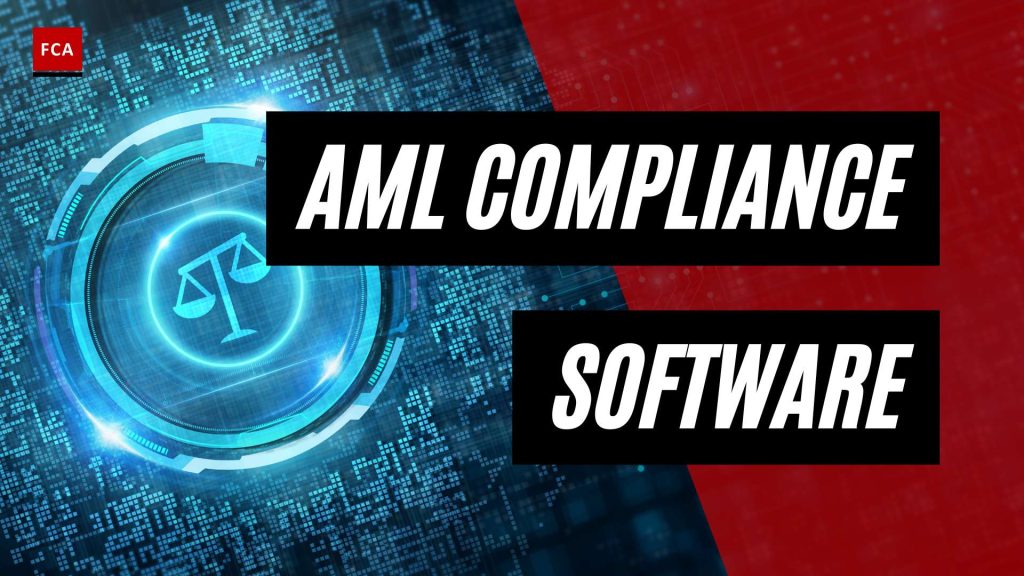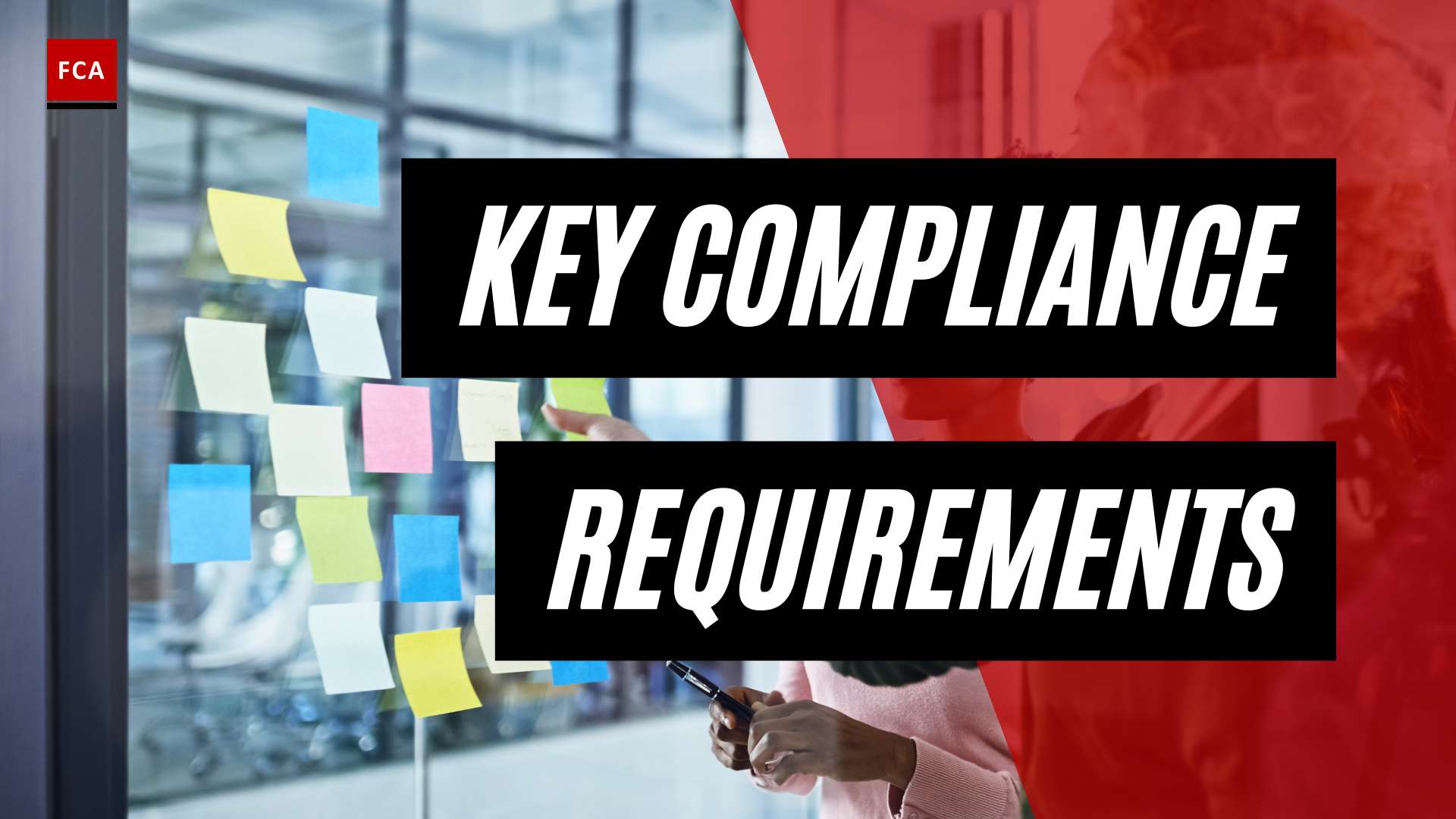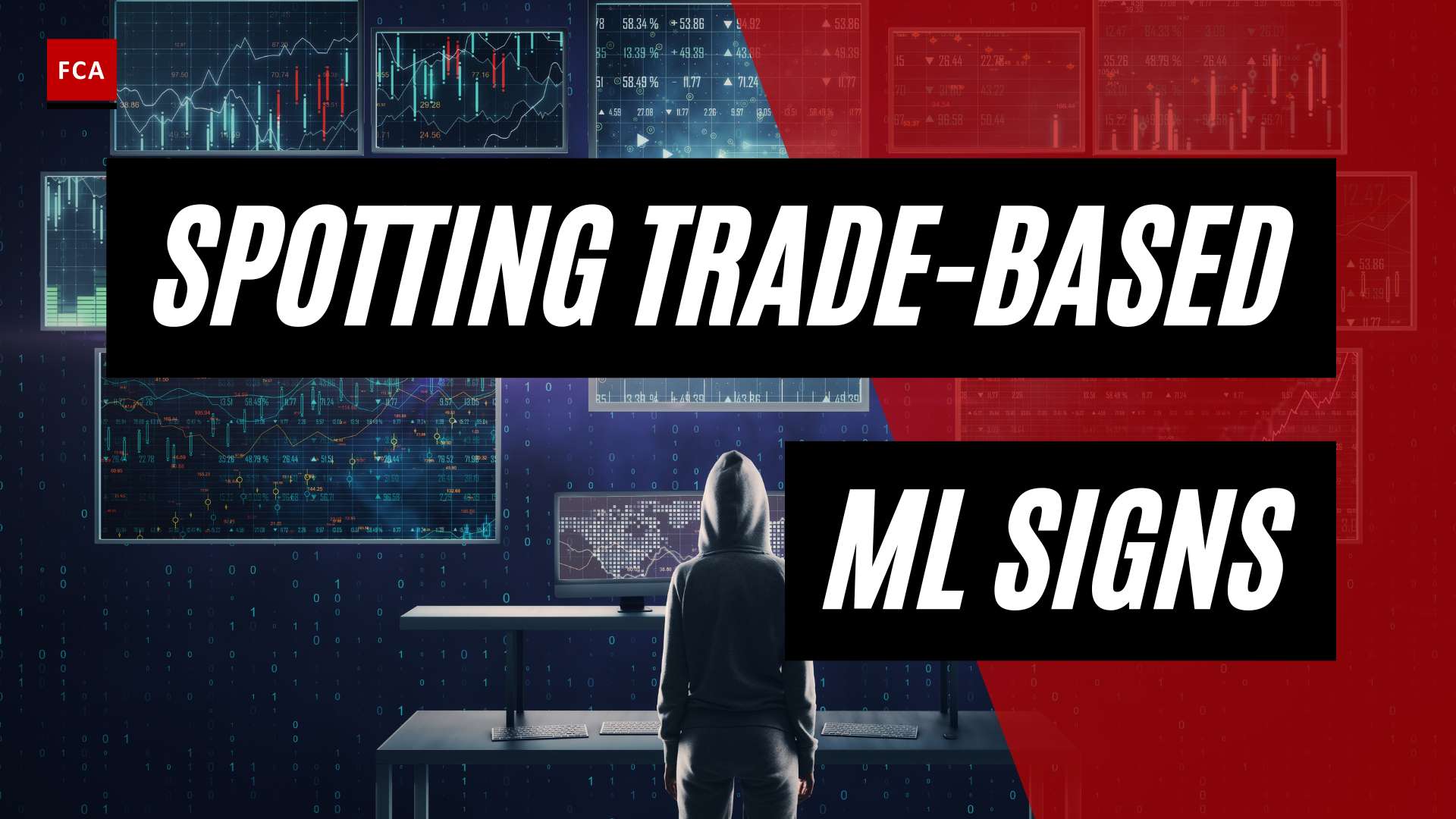Understanding AML Compliance Software
In the realm of anti-money laundering (AML) compliance, the utilization of specialized AML compliance software plays a pivotal role in assisting organizations in meeting their regulatory obligations and combating financial crimes. This section provides an overview of AML compliance software and highlights its key features.
An Overview of AML Compliance Software
AML compliance software is specifically designed to automate and streamline the process of monitoring, detecting, and reporting suspicious activities in accordance with AML laws and regulations. By leveraging advanced technologies such as artificial intelligence (AI) and machine learning, this software helps organizations analyze vast amounts of data to identify potential money laundering activities, terrorist financing, and fraud.
AML compliance software typically encompasses three primary facets:
-
Client Screening Software: This component enables organizations to verify the identity of new clients by conducting comprehensive screenings against various global sanction lists, watchlists, and politically exposed persons (PEP) databases. By performing these screenings, organizations can ensure they are not inadvertently engaging in business with individuals or entities associated with illicit activities.
-
Transaction Screening Software: Transaction screening software analyzes data points within transaction messages to identify any irregularities or potential red flags. It checks transactions against predefined rules or filters to detect suspicious activities. This helps organizations detect and prevent various forms of financial crimes, including money laundering.
-
AML Transaction Monitoring Software: AML transaction monitoring software examines patterns of client transactions to identify unusual or suspicious behavior. By applying predefined rules and filters, organizations can proactively detect and investigate potential criminal activities. The software generates real-time alerts when suspicious transactions occur, enabling organizations to take prompt action.
Key Features of AML Compliance Software
AML compliance software offers a range of features that enhance the effectiveness and efficiency of compliance processes. These features may include:
-
Automated Data Analysis: AML compliance software leverages AI and machine learning algorithms to analyze large volumes of data in real-time. This enables organizations to detect patterns, anomalies, and suspicious activities that may indicate potential money laundering or other financial crimes.
-
Alert Generation: The software generates real-time alerts when suspicious or unusual transactions are identified. These alerts prompt organizations to investigate further and take appropriate action promptly.
-
Integration Capabilities: AML compliance software can integrate with existing systems and databases, allowing organizations to streamline their compliance processes and consolidate data from various sources. Integration enhances data accuracy and reduces manual effort.
-
Advanced Reporting: AML compliance software provides comprehensive reporting capabilities, allowing organizations to generate detailed reports on suspicious activities, compliance status, and audit trails. These reports aid in fulfilling regulatory reporting requirements and demonstrating compliance during audits.
-
User-Friendly Interfaces: AML compliance software offers intuitive user interfaces that facilitate easy navigation and efficient utilization of the software’s functionalities. User-friendly interfaces enable compliance professionals to effectively manage and monitor compliance activities.
By leveraging AML compliance software, organizations can enhance their ability to detect and prevent financial crimes while streamlining their compliance processes. The software’s advanced features and automation capabilities help organizations efficiently monitor and analyze data, enabling them to stay compliant with AML laws and regulations (Tookitaki).
Importance of AML Compliance Software
AML compliance software plays a crucial role in today’s financial landscape, helping organizations address regulatory challenges and enhance financial crime prevention. By automating the process of monitoring, detecting, and reporting suspicious activities, AML compliance software assists financial institutions in complying with anti-money laundering (AML) laws and regulations. Let’s delve deeper into the importance of AML compliance software in addressing regulatory challenges and enhancing financial crime prevention.
Addressing Regulatory Challenges
Financial institutions operate in a highly regulated environment, where compliance with AML laws and regulations is of paramount importance. Failure to meet these obligations can result in severe consequences, including regulatory penalties, reputational damage, and legal repercussions. AML compliance software helps organizations navigate this complex landscape by streamlining and standardizing compliance processes.
The Bank Secrecy Act (BSA), for instance, is a crucial anti-financial crime law in the United States. It mandates financial institutions to maintain comprehensive records of client identities and transactions, as well as report various activities. Non-compliance or intentional neglect of BSA obligations can lead to significant penalties, including fines of up to $250,000 or imprisonment for up to five years (Sanction Scanner). AML compliance software enables financial institutions to meet these requirements efficiently and effectively, reducing the risk of non-compliance and associated penalties.
Additionally, global regulatory bodies like the Financial Action Task Force (FATF) provide guidelines for AML compliance programs. FATF, with its 39 member countries, including major regions such as the United States, the United Kingdom, Japan, China, Germany, and the European Commission, has the authority to impose fines and sanctions on entities and individuals failing to meet AML and Combating the Financing of Terrorism (CFT) obligations (Sanction Scanner). AML compliance software helps financial institutions align with FATF guidelines, ensuring adherence to international AML standards.
Enhancing Financial Crime Prevention
Preventing financial crimes, such as money laundering and terrorist financing, is a critical objective for financial institutions. AML compliance software plays a pivotal role in enhancing financial crime prevention efforts.
By leveraging advanced technologies and automation, AML compliance software enables efficient suspicious activity detection. It analyzes vast amounts of data, including customer information, transaction records, and external data sources, to identify patterns and anomalies indicative of potential illicit activities. This proactive approach helps organizations detect and mitigate risks promptly, preventing financial crimes from occurring or escalating.
Furthermore, AML compliance software streamlines compliance processes, reducing the burden on compliance teams and enhancing operational efficiency. It automates various tasks, such as customer due diligence, transaction monitoring, and regulatory reporting, enabling compliance professionals to focus on high-value activities, such as investigating and responding to potential risks. This streamlined approach allows financial institutions to allocate their resources effectively and maintain robust compliance frameworks.
In conclusion, AML compliance software is of utmost importance in the financial sector. It helps organizations address regulatory challenges and enhances financial crime prevention by streamlining compliance processes, automating suspicious activity detection, and ensuring adherence to international AML standards. By embracing the power of AML compliance software, financial institutions can mitigate risks, safeguard their reputation, and maintain compliance with evolving AML laws and regulations.
Types of AML Compliance Software
To effectively combat financial crimes and ensure compliance with anti-money laundering (AML) laws and regulations, organizations rely on various types of AML compliance software. These software solutions leverage advanced technologies to analyze data, detect suspicious activities, and mitigate risks. The three primary types of AML compliance software are client screening software, transaction screening software, and AML transaction monitoring software.
Client Screening Software
Client screening software plays a crucial role in the AML compliance process. This software enables organizations to verify the identities of new clients and assess the risk associated with potential customers or business partners. By comparing client information against global watchlists, sanctions lists, and politically exposed persons (PEP) lists, client screening software helps identify individuals or entities with a history of involvement in financial crimes.
By utilizing client screening software, organizations can efficiently screen customers, vendors, and other counterparties to mitigate the risk of facilitating transactions with high-risk individuals or entities. The software automates the screening process, allowing for quick and accurate identification of potential risks.
Transaction Screening Software
Transaction screening software is designed to analyze data points within transaction messages to identify any suspicious or unusual activities. This software performs real-time monitoring of transactions, comparing them against predefined filters, rules, or algorithms. By examining transactional data, such as origin, destination, amount, and frequency, transaction screening software helps detect potential money laundering, terrorist financing, or fraud activities.
With transaction screening software, organizations can effectively monitor large volumes of transactions, identify anomalies, and generate alerts for further investigation. By leveraging this software, financial institutions can enhance their ability to prevent illicit activities and comply with AML regulations.
AML Transaction Monitoring Software
AML transaction monitoring software plays a pivotal role in identifying patterns and detecting potential money laundering activities. This software analyzes client transactions in real-time or near-real-time, comparing them against predefined rules or filters. By monitoring transactional behavior, such as the frequency, size, and nature of transactions, AML transaction monitoring software can identify suspicious patterns indicative of money laundering or other financial crimes.
The software utilizes advanced technologies, such as artificial intelligence (AI) and machine learning, to improve detection capabilities, accuracy, and reduce false positives. By continuously monitoring transactions, AML transaction monitoring software enables organizations to promptly detect and report suspicious activities, ensuring compliance with AML regulations and mitigating risks.
When selecting AML compliance software, organizations should consider their specific needs, regulatory requirements, and the capabilities of the software solution. Integration and user-friendliness, advanced analytics and reporting, and adherence to AML laws and regulations are crucial factors to consider when evaluating different AML compliance software options.
By leveraging the power of client screening software, transaction screening software, and AML transaction monitoring software, organizations can strengthen their AML compliance framework, enhance financial crime prevention, and contribute to a safer and more secure financial ecosystem.
Benefits of AML Compliance Software
Implementing AML compliance software can provide numerous benefits for organizations in their efforts to combat financial crimes and adhere to anti-money laundering (AML) regulations. By leveraging the power of technology, AML compliance software offers efficient suspicious activity detection, streamlined compliance processes, and automation with advanced technologies.
Efficient Suspicious Activity Detection
One of the primary advantages of AML compliance software is its ability to efficiently detect suspicious activities within financial transactions. These software solutions analyze vast amounts of data to identify potential instances of money laundering, terrorist financing, fraud, and other financial crimes (Tookitaki). By leveraging technologies such as artificial intelligence (AI) and machine learning, AML compliance software improves the accuracy of detection and reduces false positives, enabling organizations to focus their resources on investigating genuine risks (Tookitaki).
Streamlined Compliance Processes
AML compliance software streamlines the compliance processes for financial institutions. It automates the monitoring, detection, and reporting of suspicious activities, allowing organizations to keep pace with the ever-increasing volume and complexity of transactions. Real-time alerts are generated when suspicious or unusual activities occur, enabling organizations to promptly investigate and take appropriate action (Tookitaki). By reducing manual efforts and optimizing workflow, AML compliance software enhances operational efficiency and reduces the risk of human errors in AML processes (KYC Hub).
Automation and Advanced Technologies
AML compliance software leverages automation and advanced technologies to enhance the effectiveness of AML programs. With the integration of AI, machine learning, and other cutting-edge technologies, these software solutions improve risk assessment accuracy and adapt to evolving money laundering tactics more effectively (KYC Hub). By automating transaction monitoring, customer due diligence, and compliance reviews, AML compliance software reduces the burden of manual tasks and enables organizations to focus on high-risk activities that require human intervention (KYC Hub). Additionally, the advanced analytics and reporting functionalities of AML compliance software enable organizations to generate accurate reports for regulatory bodies and demonstrate compliance with AML regulations.
By harnessing the power of AML compliance software, organizations can enhance their ability to detect and prevent financial crimes, streamline their compliance processes, and leverage automation and advanced technologies to stay ahead of emerging risks. These software solutions play a crucial role in helping businesses comply with regulatory requirements such as the Bank Secrecy Act (BSA), the USA PATRIOT Act, and the Financial Action Task Force (FATF) recommendations. Choosing the right AML compliance software is an important consideration for organizations to ensure they meet their compliance obligations and effectively combat money laundering and other financial crimes.
Considerations for Selecting AML Compliance Software
When selecting AML compliance software, there are several crucial factors that organizations should consider to ensure they choose the most suitable solution. These considerations include integration and user-friendliness, advanced analytics and reporting capabilities, and compliance with AML laws and regulations.
Integration and User-Friendliness
Integration plays a vital role in the effectiveness of AML compliance software. It is essential to select a solution that seamlessly integrates with your existing systems, such as customer relationship management (CRM) platforms, transaction monitoring systems, and databases. This integration enables the software to access relevant data and perform comprehensive analysis for effective risk assessment and identification of suspicious activities.
User-friendliness is another important aspect to consider. The software should have an intuitive interface and be easy to navigate, allowing compliance professionals to efficiently utilize its features. This ensures that the software can be effectively implemented and utilized by the compliance team, reducing the learning curve and optimizing productivity.
Advanced Analytics and Reporting
AML compliance software should provide advanced analytics and reporting functionalities to support organizations in meeting their reporting obligations and enhancing overall compliance. The software should be capable of generating accurate and comprehensive reports for regulatory bodies, enabling organizations to demonstrate adherence to AML regulations and provide evidence of due diligence.
Advanced analytics capabilities are crucial for identifying patterns, trends, and anomalies in data, allowing for effective detection of potential money laundering activities. The software should be equipped with robust data analytics tools that can analyze large volumes of data in real-time, enabling timely identification and investigation of suspicious transactions.
Compliance with AML Laws and Regulations
Compliance with AML laws and regulations is of utmost importance when selecting AML compliance software. The software should align with international AML standards, such as those set forth by the Financial Action Task Force (FATF) and local regulatory bodies. It should support the requirements outlined in regulations like the Bank Secrecy Act (BSA) in the United States and the 6th Anti-Money Laundering Directive (6AMLD) in the European Union.
By choosing a software solution that prioritizes compliance, organizations can ensure that their AML processes are aligned with legal and regulatory obligations. This reduces the risk of penalties, fines, and reputational damage associated with non-compliance.
By carefully considering integration and user-friendliness, advanced analytics and reporting capabilities, and compliance with AML laws and regulations, organizations can select an AML compliance software solution that meets their specific needs. This empowers them to enhance their anti-money laundering efforts, improve risk management, and effectively combat financial crimes.
Prominent AML Compliance Software Solutions
When it comes to tackling anti-money laundering (AML) compliance, several software solutions are available to help organizations streamline their efforts and meet regulatory requirements. Here are three prominent AML compliance software solutions:
Napier’s Intelligent Compliance Platform
Napier’s Intelligent Compliance Platform is a UK-based AML compliance software solution that offers a comprehensive range of features. Integrated into a user-friendly dashboard, it provides functionalities for client screening, transaction screening, ongoing Know Your Customer (KYC) checks, and transaction monitoring. The platform helps businesses save time, resources, and money while ensuring compliance with AML regulations.
Refinitiv World-Check Risk Intelligence
Refinitiv World-Check Risk Intelligence is a highly regarded AML software solution trusted by organizations worldwide. It offers advanced screening capabilities across global sanction and warning lists. By leveraging this solution, businesses can enhance their due diligence processes and strengthen their compliance efforts. The comprehensive screening functionality helps identify potential risks and ensure regulatory compliance.
Trulioo’s AML Compliance Software
Trulioo provides AML compliance software that offers automated negative news checks across millions of articles. This feature enables businesses to identify potential risks associated with individuals or entities and ensure compliance with AML regulations. Trulioo’s software helps organizations streamline their compliance processes and enhance their risk management strategies.
These prominent AML compliance software solutions offer a range of features and functionalities to help organizations effectively address the challenges associated with AML compliance. By leveraging such software, businesses can improve their suspicious activity detection capabilities, streamline their compliance processes, and benefit from automation and advanced technologies.
It’s important to note that selecting the right AML compliance software requires careful consideration. Factors such as integration and user-friendliness, advanced analytics and reporting capabilities, and compliance with AML laws and regulations should be taken into account. For more information on considerations when selecting AML compliance software, refer to our article on AML compliance solutions.
By harnessing the power of AML compliance software, organizations can enhance their compliance efforts, mitigate financial crime risks, and ensure adherence to international AML standards such as the FATF Recommendations. However, it’s essential to evaluate the specific needs of your organization and choose the software that best aligns with your requirements and compliance objectives.
User Satisfaction and Recommendations
To gauge user satisfaction and recommendations for AML compliance software, reviews and ratings from industry professionals provide valuable insights. According to user feedback on Gartner Peer Insights, the top-rated AML compliance software solutions are Actimize, FICO, and Oracle.
Actimize AML Software
Actimize, a subsidiary of NICE, has established itself as a leader in the AML software market. Users highly praise Actimize for its comprehensive capabilities in monitoring, alert management, case management, and regulatory reporting. The software’s robust functionality and advanced features contribute to its positive user reviews and satisfaction scores.
FICO AML Software
FICO’s AML software solution is widely recognized for its user-friendly interface, comprehensive features, and effective AML transaction monitoring capabilities. Users appreciate the software’s robust analytics, which enable proactive identification of potential money laundering activities. FICO’s AML software receives positive feedback for its ability to streamline compliance processes and enhance financial crime prevention.
Oracle AML Compliance Software
Oracle’s AML compliance software earns high marks from users for its scalability, flexibility, and integration capabilities with other systems. The software is commended for providing comprehensive AML compliance functions, including client screening, transaction screening, and AML transaction monitoring. Users value Oracle’s software for its adaptability to meet the evolving needs of their organizations.
When selecting an AML compliance software solution, it’s important to consider factors such as integration capabilities, user-friendliness, advanced analytics, and compliance with AML laws and regulations. Evaluating user satisfaction and recommendations can play a significant role in choosing a solution that aligns with your organization’s specific requirements.
Note: It’s essential to conduct thorough research and consider multiple sources of information when choosing an AML compliance software solution. The recommendations provided here are based on user feedback and should be used as a starting point for further exploration and evaluation.








